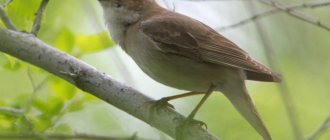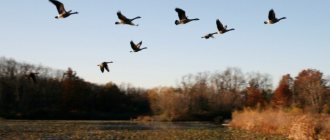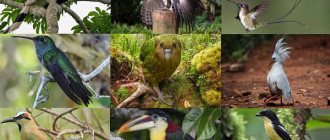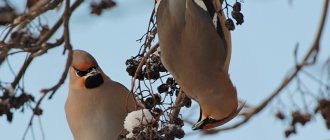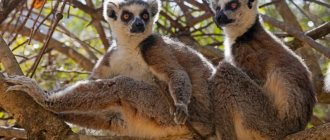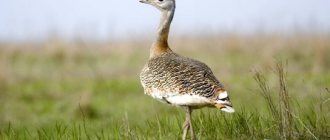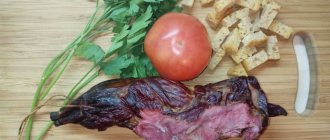Forest nurses are animals capable of cleaning their own habitat through their actions. And even if their behavior is determined only by instincts developed over many years of evolution, their role in the ecosystem of the region cannot be underestimated. But who are they?
If we talk about those animals that live on the territory of the Russian Federation, then three large groups should be noted. These are birds, ants and wolves. Despite their strong external differences, they are all excellent environmentalists.
What bird eats the furry caterpillars of dangerous forest pests?
In spring and summer, woodpeckers eat large quantities of various insects and their larvae: beetles, including those that feed on wood (longhorned beetles, bark beetles, golden beetles, horn beetles, leaf beetles, ladybugs, weevils, ground beetles), caterpillars and adult butterflies, including hairy ones ( carpenter moths, glass beetles, corydalis, moths, moths, ...
Interesting materials:
How to add a percentage to a number in Excel? How to round a number after the decimal point in Excel? How to multiply a number by a number in Excel? How to multiply all rows by one number in Excel? How to convert a number to minutes and seconds in Excel? How to multiply a string by a number in Excel? How to raise a number to a power on a computer? How to raise a number to a power using a calculator? How to subtract numbers with different exponents? How to subtract rational numbers with different signs?
The role of birds in the forest ecosystem
By nature, all birds are forest nurses. This is due to the fact that they feed on insects, which, in turn, are the main pests. Judge for yourself, because it is insects that eat tree leaves, destroy wood and bark, and also carry various infectious diseases.
By eating beetles and caterpillars, birds reduce their numbers, which reduces damage to the environment to a minimum. Such a food chain allows us to achieve harmony, which is so necessary for the normal growth of the forest.
Although all birds are forest orderlies, there are still species that do their job better than anyone else. For example:
- The woodpecker is the main doctor in the forest, because it is able to pick out pests straight from the tree trunk. In addition, by knocking on it with his beak, he forces insects to crawl out of the shelter, thereby making them vulnerable to other hunters.
- The pink starling actively hunts locusts. That is why this bird is such a welcome guest not only in forests, but also in orchards.
- Starlings are the fastest forest orderlies. According to rough estimates by scientists, they can catch up to 400 bugs in one day.
Pika
Pika eats weevils, leaf beetles, psyllids, aphids, spiders, caterpillars and bedbugs. Moreover, with the onset of the autumn-winter period, this bird, unlike many of its fellows, does not switch to complete vegetarianism, but continues to exterminate pests that winter in cracks and crevices of the bark, but a significant diet of the pika at this time consists of seeds.
Pika
The pike makes nests in low dilapidated hollows, cracks and crevices of trunks.
Among the destroyers of tree enemies one can also name the oriole, jay, wren, and warbler.
Redstart
Another insect lover. Its menu includes weevils, click beetles, ground beetles, leaf beetles, dung beetles, long-legged mosquitoes, flies, sawfly larvae, ants, riders, butterflies and caterpillars, bugs, and spiders. At the end of summer, the redstart switches to berries and seeds, and flies to South Arabia and equatorial Africa for the winter.
Siberian redstart
To construct a nest, the redstart is ready, as they say, to climb into any hole. A hollow, a burrow, or a woodpile will do - this bird will nest between the roots and build a nest under the wall cladding. It chooses bright places to settle and loves clearings.
Ants are small guardians of the forest
But not all insects harm the environment. There are those who strive to protect it from pests with all their might. Everyone has heard about them, and yet not many know why ants are forest nurses.
It's actually quite simple. Ants destroy almost all insects that dare to crawl into their territory. At the same time, they can easily cope with an enemy that surpasses them both in size and physical strength. And all because ants are a team capable of acting as one mechanism.
In addition, they use small garbage in their construction, thereby cleaning the forest. According to experts, five anthills are enough to keep an area of one hectare clean.
Lifestyle of a Great Woodpecker
Watching different birds brings a lot of pleasure. This is especially true for forest dwellers. The peculiarity of woodpeckers is that they do not sit idle. Therefore, from early morning they are busy with their hard work: chiseling wood. After their work, hollows remain, which are then used by various birds and animals.
The peculiarity of woodpeckers is that they do not like flying . Most often they prefer to climb trees using their claws and tail. It is noteworthy that this also applies to chicks. They begin to move around the tree earlier than to fly. In winter they lead the same lifestyle.
Tit
Another pest exterminator that is well known to us is the tit. In our area there are several species: the tufted tit, the Muscovy, the blue tit - a very beautiful bird. Most often we encounter the great tit . It can be seen in groves, parks, gardens, and city streets. Does not really like dense thickets and prefers deciduous and mixed forests to coniferous forests.
Great tit
From thin branches, grass, moss, fluff, feathers and even cobwebs, tits build nests in hollows, birdhouses and other secluded places. During nesting, she actively eats insects, collecting them from under the bark, from branches and leaves, and catching them in the air.
Tufted tit
The tit's menu is very varied; it is not afraid to contact even a large, furry caterpillar. When summer ends, tits switch to plant food and eat the seeds of a wide variety of trees and shrubs. In winter, these birds become almost omnivorous and stay closer to humans.
From head to tail
Ever wondered why a woodpecker doesn’t have a headache or a concussion? Everything is very simple. When a bird hits a hard surface with its beak, a special muscle moves the skull away from the beak, leaving a special cartilaginous body between them as a shock absorber. As for the tail, it plays no less a role in the life of a bird than the beak. The tail serves not only as a rudder during flight, but also as a reliable support. When chiseling a tree, in order not to slide down the trunk, a woodpecker relies so heavily on its tail that by old age it wears off by ten percent. Fingers with claws serve the same purpose (not to fall from a tree when working with a beak). Almost all birds have three toes pointing forward and one toe pointing back. And in woodpeckers they are mirrored and symmetrical, that is, two forward and two backward. This helps them cling more confidently to the surface of the tree.
Ivory-billed Woodpecker
Campephilus principalis Class : birds Habitat : North America Food : insect larvae, fruits, berries, nuts Lifespan : up to 11 years Wingspan : up to 80 centimeters
Magazine: Secrets of the 20th century No. 3, January 2022 Category: Our neighbors in planet Author: Konstantin Fedorov
Tags: Secrets of the 20th century, tree, bird, beak, head, woodpecker
- Back
- Forward
Wolves - predatory forest orderlies
Many people are afraid of wolves, and for good reason. These predators always hunt in packs and will not disdain any prey. And yet they were called forest orderlies. Want to know why?
First of all, wolves, like any predators, eat animal corpses. Thanks to this, there was so little carrion in the forest, which reduces the risk of various types of diseases. In addition, wolves prefer to kill weak and sick animals, preventing them from continuing their lineage. This natural mechanism allows us to improve the gene pool and increase the species’ chances of survival.
In addition, wolves control the number of herbivores. There is a known case when in America, in one of the states, almost all wolves were exterminated. Subsequently, the population of herbivores increased so much that the pastures did not have time to be overgrown with new grass. Poor animals died of hunger, and their corpses became hotbeds of serious diseases.
Nuthatch
Almost omnivorous. In summer, when there is a sufficient number of insects, it lives by hunting. Searches for prey in the bark, crawling along the trunk from top to bottom. In autumn it switches to seeds and berries. In winter, it eats tree seeds stored in bark cracks and visits garbage dumps and feeders.
Nuthatch
Lives in forests, old gardens and parks. It nests in mixed and deciduous forests, in tree hollows.
Mad Doctor
Woodpeckers are widespread almost all over the world. They are not found only in Australia, New Zealand, New Guinea and Madagascar. But in Central and South America there are the most of them. And, by the way, they are very different there from the gray red-headed woodpeckers we are used to. In total, there are 220 species of woodpeckers in the world. And this despite the fact that there are only about 9,000 species of different birds in the world. To Europeans, any bird that lives in tropical forests seems very beautiful. Red-crested woodpeckers are no exception - very large and unusually bright birds that inhabit the forests of Panama and Venezuela. Here is a description of such a woodpecker, compiled by zoologist Gerald Durrell: “It was a large black woodpecker with a long, curly, wine-red crest and an ivory beak. He looked at us, clinging to the bark, until his girlfriend joined him, and then they began to scurry up and down the trunk, tapping it with an important air with their beaks and listening with their heads tilted to one side. From time to time they burst into short bouts of shrill metallic laughter and, in their eerie, inarticulate bird language, talked among themselves about some joke they knew only - two crazy red-haired doctors, tapping a patient's chest and giggling delightfully at what they discovered symptoms of the disease: wormholes, tubercular spots of dry rot and hordes of maggots tirelessly gnawing on their patient. The woodpeckers seemed to be terribly amused by all this.”
Wolves live in families
Wolves are social animals: they live in families. Any flock has its own “table of ranks”, and in it everyone has their own place. Strong and aggressive wolves rule, and those who need a firm hand obey them. A wolf pack - a group of animals related by kinship and mutual sympathy - is led by a wolf and a she-wolf. The rest of its members are their offspring (from tiny puppies to 2-3 year old teenagers). Usually there are 6 - 7, and sometimes 15 animals in a wolf family. The strongest wolf in the pack becomes the leader. His friend, a she-wolf, helps him rule. Leaders must have strong character in order for others to obey. All decisions concerning the life of the pack are made by this pair. In a pack where the leader keeps order, wolves usually do not fight among themselves. However, clashes with strangers or lone wolves who trespass often occur.
Warblers
Warblers are not the last fighters in the ranks of tree protectors: the chiffchaff, the rattle warbler, the green warbler, and the willow warbler.
Willow warblers look for food on the leaves of trees and bushes. They use leaf aphids, small caterpillars, mayflies, mosquitoes, longworms, spiders, and flies . In autumn, when the hunting season ends, willow warblers feed on currants and elderberries. The winter is spent in southern Africa.
Warbler
Warblers prefer to settle on forest edges and in gardens. The nest is built on the ground, in the form of a hut.
What do wolves eat?
The basis of wolves' diet consists of ungulates: in the tundra - reindeer; in the forest zone - elk, deer, roe deer, wild boars; in the steppes and deserts - antelopes. Wolves also attack domestic animals (sheep, cows, horses), including dogs.
Interesting materials:
What to do if the socket melts? What to do if Samsung A51 does not turn on? What to do if the roots of an anthurium rot? What to do if a ballpoint pen does not write? What to do if the puppy does not sleep at night? What to do if the video card gets very hot? What to do if the system did not detect msvcp140 DLL? What to do if you can hear your voice on Discord? What should I do if my interlocutor can’t hear me on Viber? What to do if the thread on a bolt is broken?
Gray flycatcher
It prefers flying insects, but is not too lazy to pick up those that crawl on the leaves and in the grass. Eats flies, horseflies, mosquitoes, weevils, butterflies, caterpillars, ants, dragonflies, locusts, cicadas.
For the winter it flies to Africa, Mesopotamia, Iran, and India. It lives in forests, on the edges, in gardens and parks, on the streets of small towns. It nests in light areas of coniferous forests, preferring tall pines with dry branches. It can also choose a mixed or deciduous forest, but dead wood or broken trees are required - it is in their cracks that the gray flycatcher builds its nest.
Gray flycatcher
Gray flycatcher chicks
In gardens and parks, it makes a nest in birdhouses, hollows, on stumps and thick branches near trunks, on fences, eaves and attics of houses. The main thing is to have a wide area with cover. It happens that it builds a nest on the ground, but in very rare cases.
How do ants clean their environment?
Very often, people are amazed at the organization of ant colonies. Hardworking insects devote their entire lives to specific work. Their life resembles a caste distribution, since there are ants that perform only a labor function, and there are those that are intended to bear eggs and protect them.
Ants are forest orderlies for several reasons. Thanks to their unique ability to carry large loads, ants are able to feed on huge larvae of harmful insects. Pouncing in a large group, they kill the larva and carry it into the house to feed the rest of the ants.
In the same way, these little forest orderlies are able to kill field mice and wounded birds. For ease of transportation, ants can divide their prey into several parts and, together, move it to their home in a short period of time.
In addition to their cleansing function, ants also have the ability to participate in soil formation. Due to this, in some states these insects are protected by law.


